Chains vs. Belts: choosing the right conveyor for your silage wagon
When engineering livestock farm equipment that involves a feed conveyor, like the majority of feedout wagons available in the market these days – TMR, forage wagons, beater wagons, silage wagons, etc, one of the crucial decisions to make is to select between chain conveyors and conveyor belts.
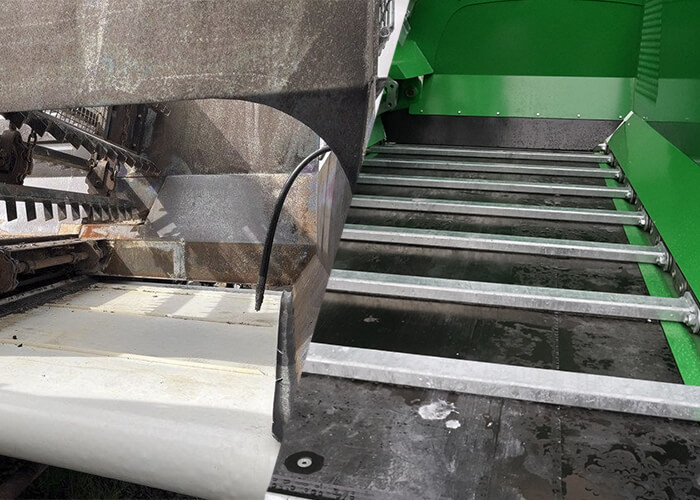
Sam Kerrisk, who works as an R&D Designer for Hustler Equipment, has explained that they decided to use chains for the side conveyor in their EzFeed silage wagon range.
“Some people believe that chains are less effective than belts because they are not able to carry material away efficiently. However, this is a preconceived idea, at least for silage. When it comes to silage, there is no difference in terms of efficiency between chains and belts. The problem with belts is that they have reliability, maintenance, and durability issues. Belts are better suited for use with fine particles or sand in quarries for instance,” said Kerrisk.
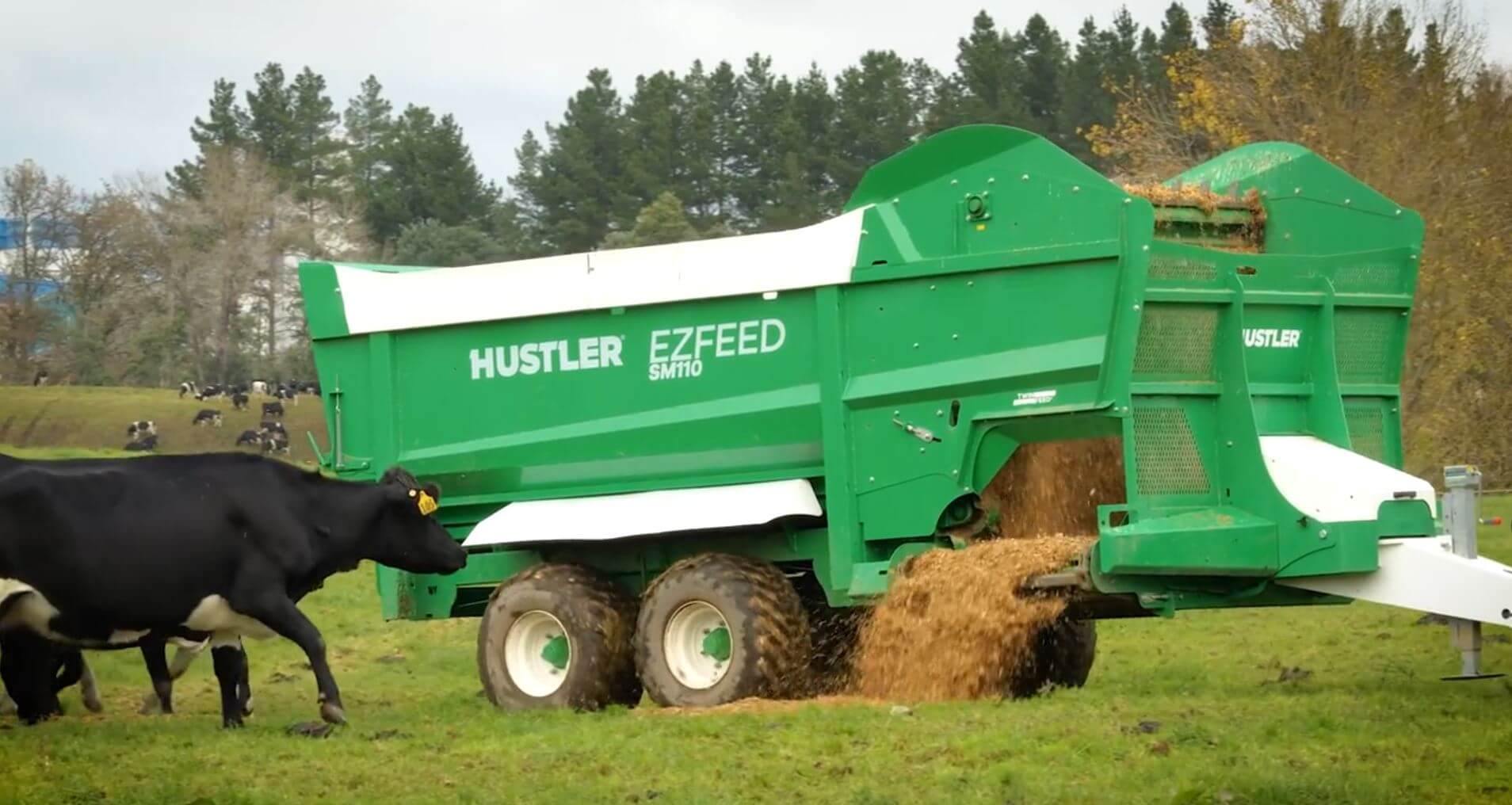
The durability of chain conveyors makes them an ideal choice for silage, which is often heavy, bulky and acidic. The material’s abrasive nature can cause significant wear and tear on equipment, which can lead to frequent maintenance and costly repairs.
Chain conveyors are designed to handle the daily challenges of silage feeding with ease and can withstand the harsh environment and constant use, unlike belts. This resilience ensures that they remain in excellent condition for longer, which in turn translates to a more efficient and cost-effective operation.
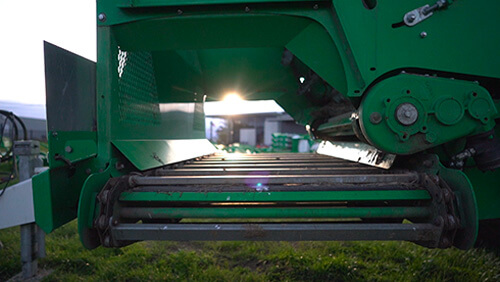
“When it comes to operating silage wagons in countries like New Zealand, Australia, Chile or even Canada or the United States, one of the most common challenges faced by farmers is handling the uneven terrain. The use of traditional belt conveyors can be risky on such grounds as they are prone to slippage, leading to inconsistent feeding on inclines or declines,” detailed Kerrisk.
Chain conveyors provide superior traction, which not only minimizes the risk of slippage but also ensures consistent feeding even on uneven terrains. This way, farmers can achieve better efficiency and productivity while maintaining the quality of their silage.
Chain conveyors offer several advantages over traditional conveyor belts in the handling of bulk silage. One of the most significant benefits is their ability to reduce damage caused by foreign objects such as rocks. Conveyor belts are often susceptible to tears or punctures when they come into contact with such objects, which results in frequent repairs and downtime. Chains are less prone to such damage and can handle a wide range of materials, including those with sharp edges or high abrasiveness.
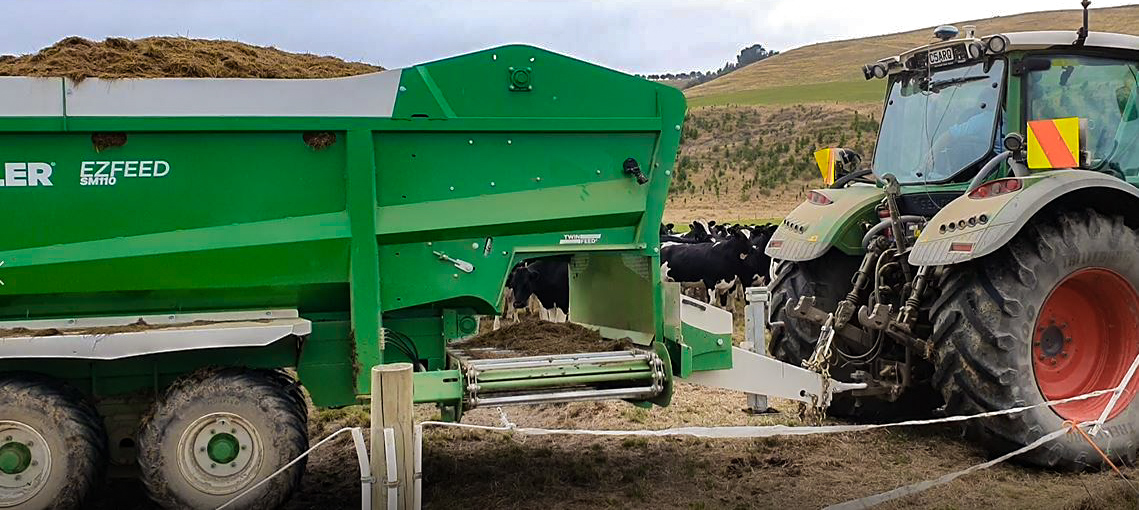
Additionally, chain conveyors have a higher load capacity and can move heavier loads at higher speeds than traditional belt conveyors, further improving their operational efficiency. Belts require constant adjustment as they are prone to get slack or offset quickly. Overall, the use of chain conveyors in bulk material handling operations can help minimise downtime, reduce repair costs, and enhance productivity.
In comparison to belts, which cost around USD $1,000 and require replacement every 2-3 years, chains last between 5 and 10 years and cost about USD $400 (USD $800 for a set) at Hustler. If the belt is damaged, the whole machine becomes immediately impossible to use. If the feedbar of a chain conveyor gets damaged or bent, it can be removed and the wagon can still be used, preventing any downtimes. Replacing a single bar costs only around USD $40.
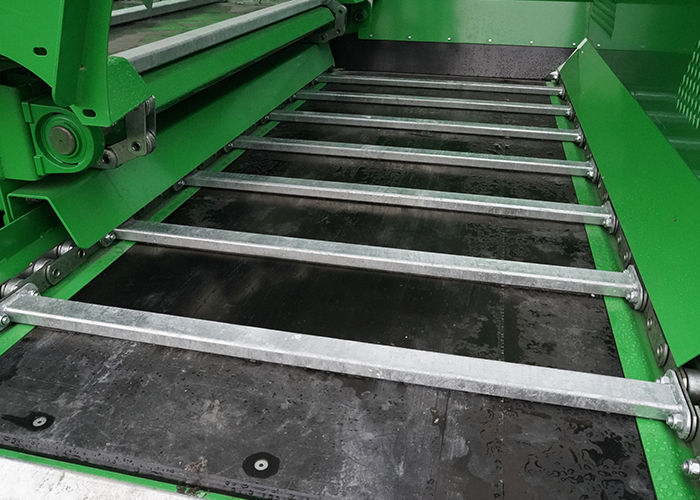
Maintaining cleanliness in feeding equipment is crucial, especially during winters when feed can get contaminated with mud and dirt. Wet or sticky materials tend to stick to the belt surface, forming a layer of residue that is difficult to remove, which can affect the belt traction, alignment, and tension, as well as the accuracy of the material discharge.
In contrast, chain conveyors are ideal for easy cleaning since their design allows for thorough cleaning with water and cleaning solutions. These solutions can penetrate the gaps between chain links, effectively removing stubborn silage buildup.
Conveyor belts may have their uses, but when it comes to silage wagons, chain conveyors offer numerous advantages. “They are highly durable, provide excellent traction, are easy to clean, and can be adapted to different equipment types. As a result, they are the perfect choice for Hustler EzFeed wagons and other agricultural equipment, allowing for efficient and productive farming practices,” concluded Kerrisk.
| Criteria | Chain Conveyor | Conveyor Belt |
|---|---|---|
| Durability | Highly durable, resistant to wear and tear. | Prone to reliability, maintenance, and durability issues. |
| Traction | Superior traction, ensuring consistent feeding. | Prone to slippage, leading to inconsistent feeding. |
| Damage Resistance | Less prone to damage from foreign objects. | Susceptible to tears or punctures from foreign objects. |
| Load Capacity and Speed | Higher load capacity and speed. | Lower load capacity and speed. |
| Maintenance | Requires less maintenance. | Requires constant adjustment due to slack or offset. |
| Lifespan and Replacement Cost | Lasts between 5 and 10 years, replacement cost about USD $400 or $800 for the whole set. | Replacement cost around USD $1,000 every 2-3 years. |
| Repair Flexibility | Individual component replacement, preventing downtimes. | Whole machine becomes unusable if damaged. |
| Cleaning | Ideal for easy cleaning, effective removal of stubborn buildup. | Cleaning may be challenging, especially with stubborn buildup. |
Hustler’s chain conveyor in a few figures:
- Drive system: direct drive
- Feed bars: 50 x 25 mm (1.9″ x .9″) RHS
- Chains: Twin 12,000lb capacity roller chains
- Sprockets: High-tensile (Bisalloy®) drive sprockets welded on the shaft (without bushes)
- Specs: TwinFeed™ left-hand side & right-hand side discharge, 1000mm (39.4”) wide chain/slat
Hustler EzFeed silage wagon range makes your feed operation easier thanks to unparalleled standard features:
- 100% 12,000lb roller chain
- Gearbox drive & protected chains
- Rotomoulded hungry boards
- Remote greasing
- Access Ladder
- Auto-release, removable (without tools) tailgate
- UNIQUE TO HUSTLER EZFEED – TwinFeed™ standard left-hand side & right-hand side discharge conveyor, 1000 mm wide chain/slat
The Hustler EzFeed is available in the following sizes/capacities:
- EzFeed SM110 | 11 m³
- EzFeed SM130 | 13 m³
- EzFeed SM150 | 15 m³
- EzFeed SX180 | 18 m³
- EzFeed SX210 | 21 m³
Think ahead of the herd with Hustler, contact us today for a quote or to book an on-farm demo!
You may also like to take a look at some of these great resources:
- The Art of Sustainable Hay Feeding in a Tough Economy
- Benefits of feeding long-stem hay, especially when weaning calves
- Does it really make sense to ground-feed onto mud?
- How to deal with hay shortage in drought conditions
- Improve your pasture for free with your bale feeding routine
Here at Hustler, farming sustainably is at the heart of everything we do.
Our belief in sustainable farming practices underpins our range of world-leading livestock feeding solutions. If you are looking for farming equipment near you or buying livestock feeding equipment, contact our friendly team today!



























